Are you considering stepping away from your current research role? Resigning from a research position is a significant decision, and it's important to approach it thoughtfully and professionally. In this article, we'll guide you through the essential elements of crafting a resignation letter that reflects both your gratitude and intentions for the future. Join us as we explore tips and templates to help you navigate this transition smoothly!
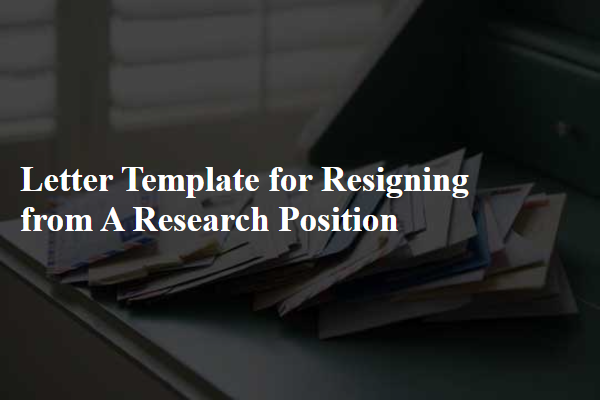
Professional tone and respectful language
Resigning from a research position involves a formal and respectful approach. A well-crafted resignation letter should express gratitude for the opportunities provided and briefly explain the reason for leaving, without going into excessive detail. It is also important to offer assistance during the transition period and maintain a professional tone throughout the letter. A resignation letter typically starts with the date at the top, followed by the recipient's name, title, and organization. The opening should state the intent to resign, reference the position held, and indicate the final working day, usually providing at least two weeks' notice. The body of the letter should express appreciation for the experience gained and professional growth opportunities, perhaps highlighting specific projects or mentorship experiences that were particularly valuable. Ending the letter with an offer to help transition responsibilities underscores professionalism and goodwill. The letter concludes with a formal closing, such as "Sincerely" or "Best regards," followed by the researcher's name and contact information. This respectful approach helps maintain a positive relationship, which could be beneficial in future endeavors.
Clear statement of resignation
A research position at a reputable institution often involves intricate projects and teams. A clear resignation statement should include the position title, current date, and intended last working day to ensure a smooth transition. For instance, if the individual serves as a Research Associate in a prestigious university's neuroscience lab, indirectly referencing ongoing projects can help contextualize the departure. The statement should denote professionalism, such as acknowledging support received from colleagues and mentors, fostering future relationships. This direct yet courteous tone can enhance communication clarity and maintain positive professional rapport.
Effective resignation date
A researcher's resignation from a position often requires careful consideration of various factors. Submitting a formal resignation letter, typically addressed to a department head or principal investigator, is crucial. Including an effective resignation date helps manage transition timelines. Prior notice, often two weeks to a month, allows for knowledge transfer and project handover. It is vital to express gratitude for the opportunities provided during the tenure, especially the chance to collaborate with esteemed colleagues and contribute to significant research publications. Honoring professional relationships enhances future networking prospects within academia or industry settings, which can be beneficial for ongoing research engagements or career advancements.
Appreciation for opportunities
In the realm of academia, expressing gratitude while resigning from a research position carries significant weight. A researcher works closely with esteemed faculty members, collaborates with peers on innovative projects, and contributes to groundbreaking studies. As one leaves this environment, acknowledging the invaluable opportunities gained can foster goodwill and promote future networking. Highlighting experiences such as acquiring advanced research techniques, participating in influential conferences, or contributing to published papers lays a foundation for a respectful exit. Demonstrating appreciation for mentorship received and skills developed reinforces positive relationships that may benefit one's career journey ahead.
Offer to assist in transition
Resigning from a research position, especially within an academic or scientific environment, requires careful communication. A well-constructed resignation letter should express gratitude, outline your final working days, and offer to assist with the transition process. Consider including key details such as the specific research projects you were involved in and how your departure might impact ongoing work. Mentioning particular colleagues or mentors who supported your growth during your tenure can add a personal touch. Clearly stating your last working day, ideally providing a notice period of two weeks or more, will help facilitate the transition. Additionally, you should emphasize your willingness to help train your successor or wrap up current projects to ensure a smooth handover. Highlighting the collaborative spirit of research underscores your commitment to the team's success, even after your departure. Make sure to maintain a professional tone throughout, reflecting on your positive experiences and future aspirations, showcasing your professionalism until the very end of your tenure.
Letter Template For Resigning From A Research Position Samples
Letter template of resignation from a research position due to personal reasons.
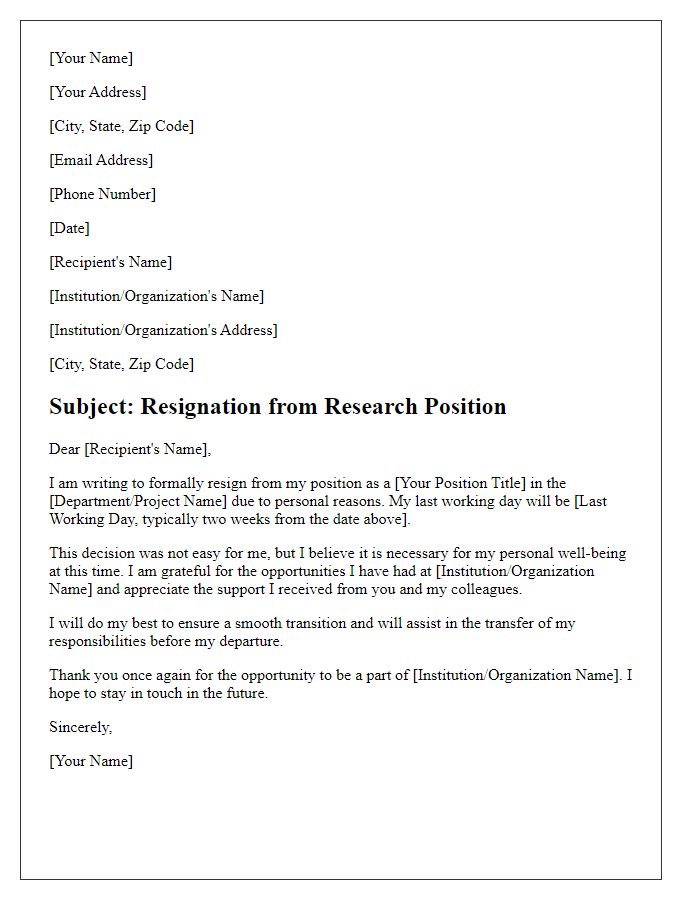
Letter template of resignation from a research position for pursuing further studies.
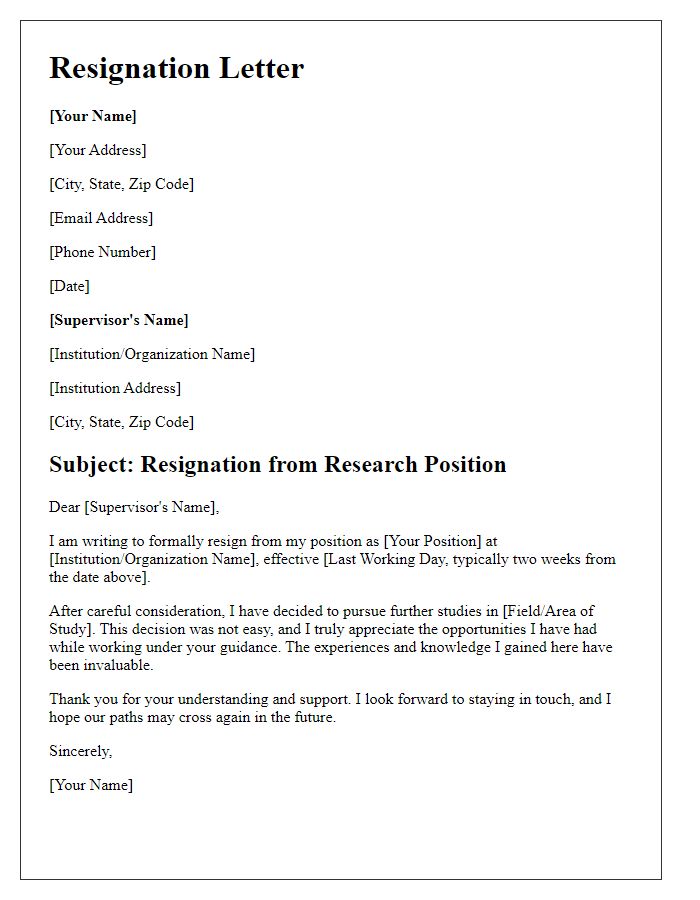
Letter template of resignation from a research position to accept a new job.
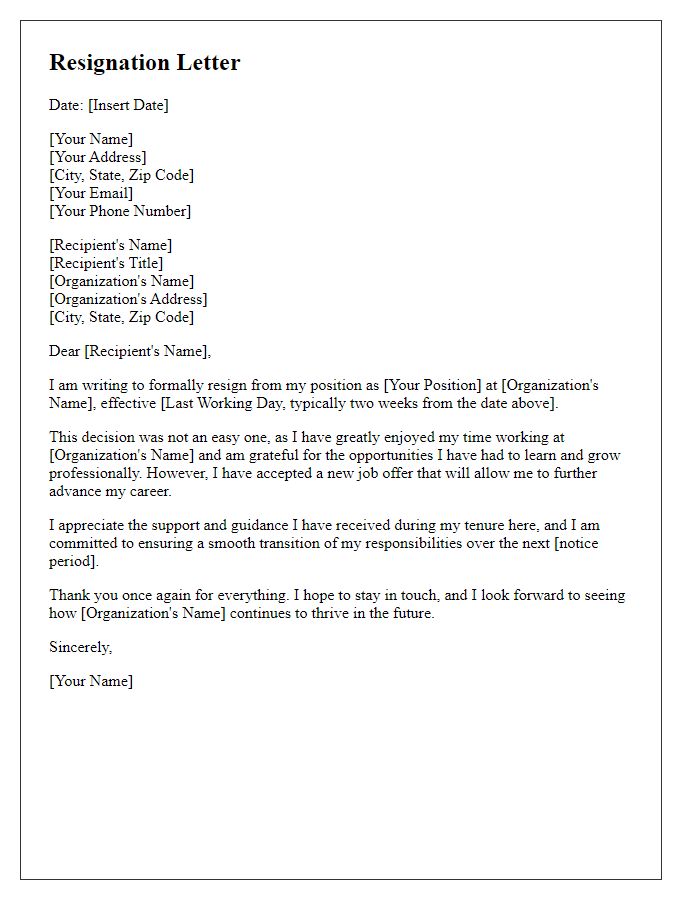
Letter template of resignation from a research position for family commitments.
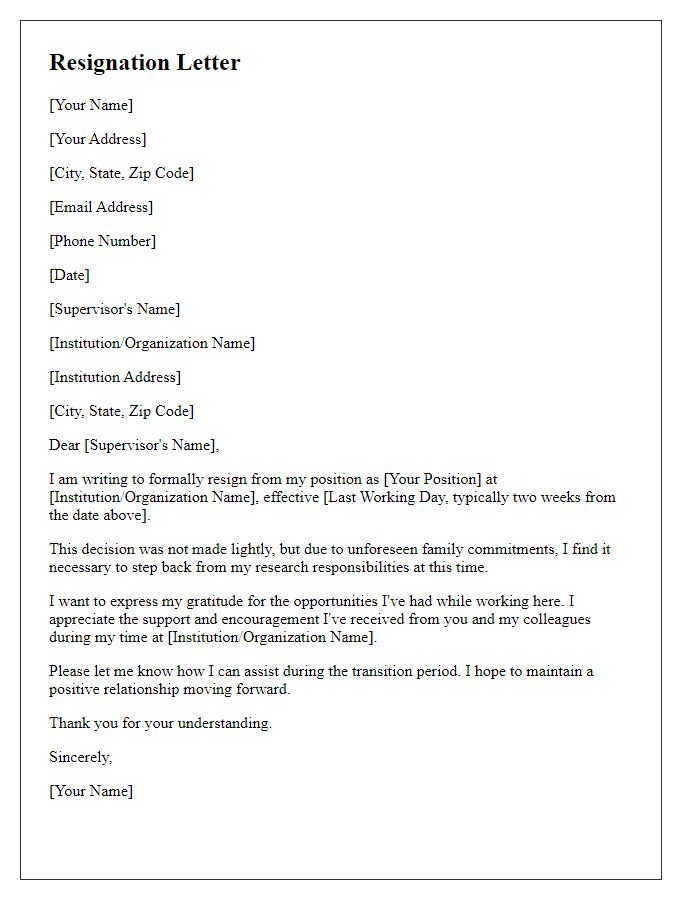
Letter template of resignation from a research position to start a business.
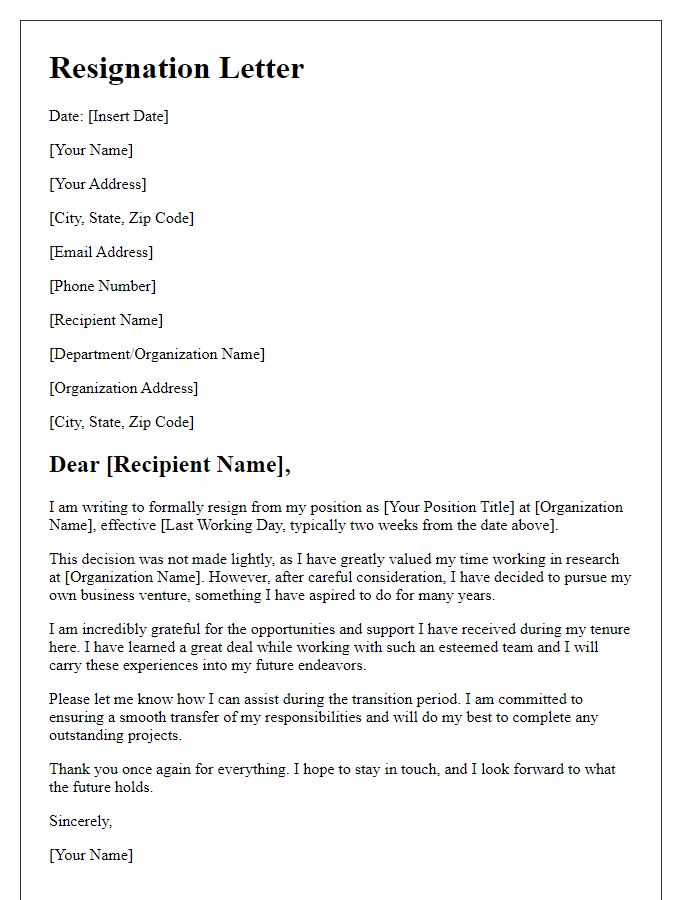
Letter template of resignation from a research position to explore new opportunities.

Letter template of resignation from a research position for career advancement.
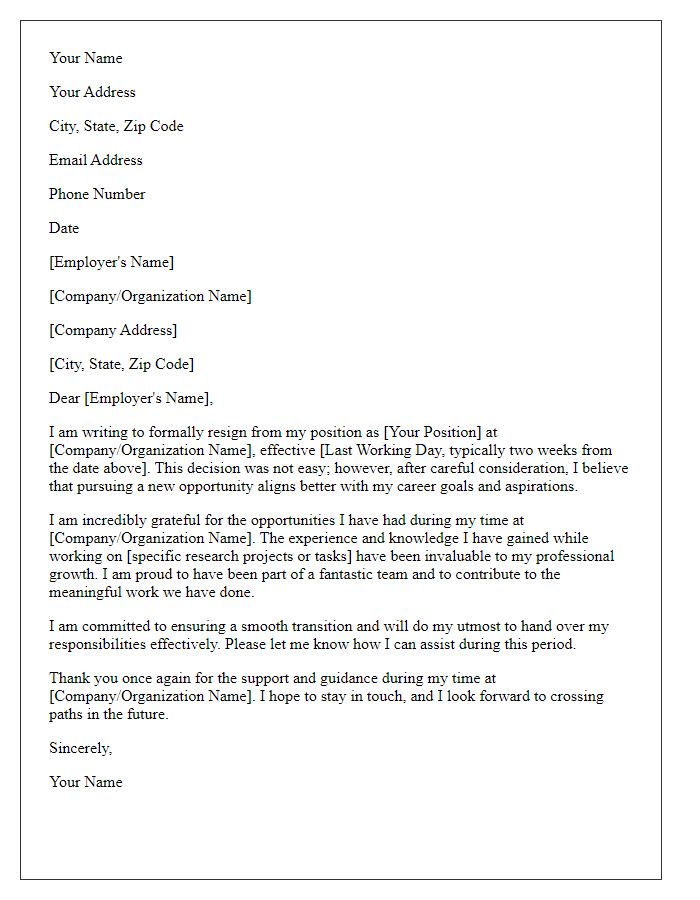

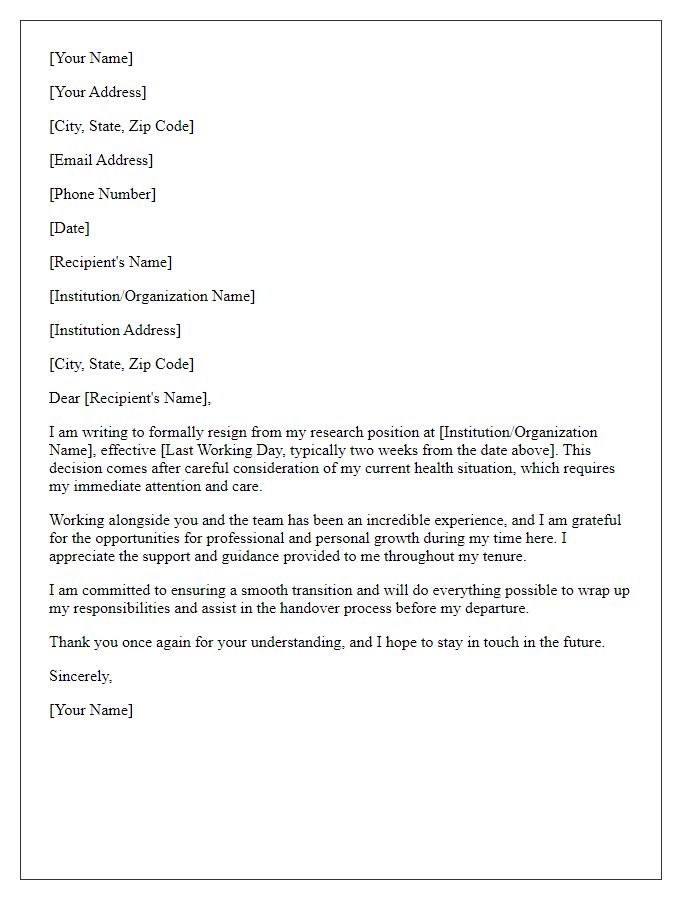
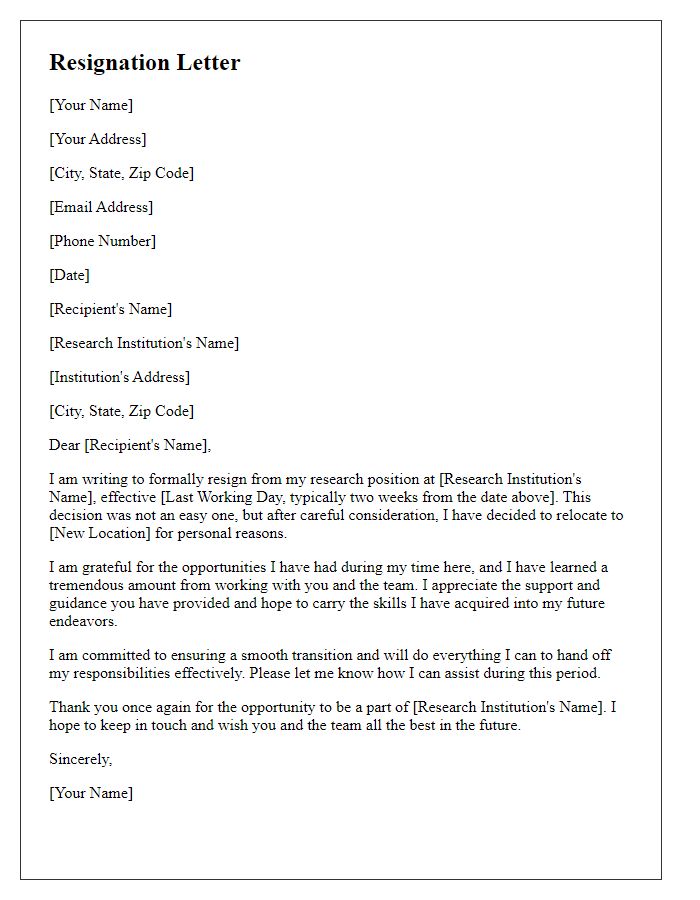
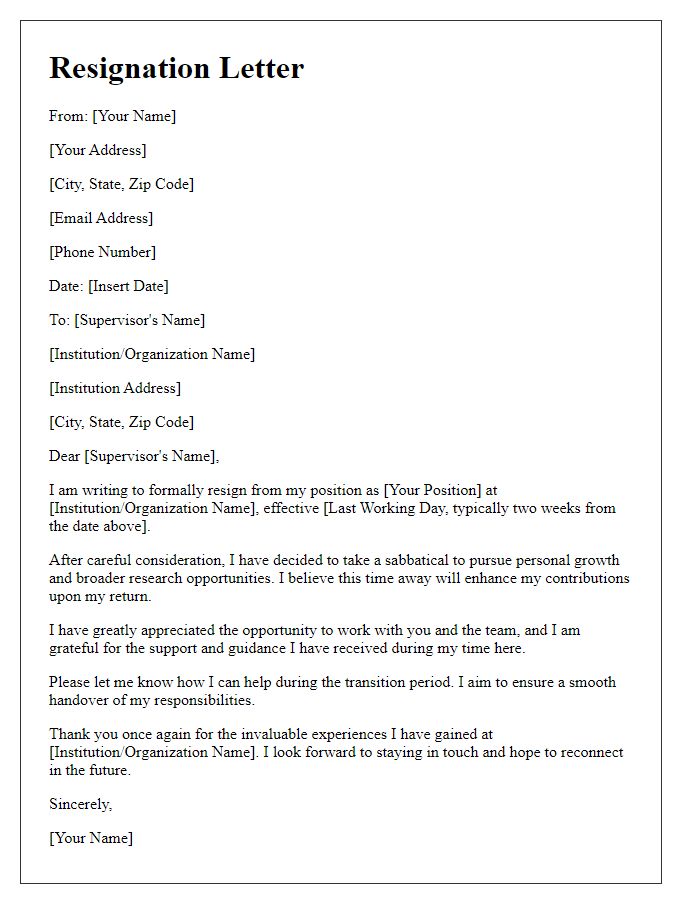



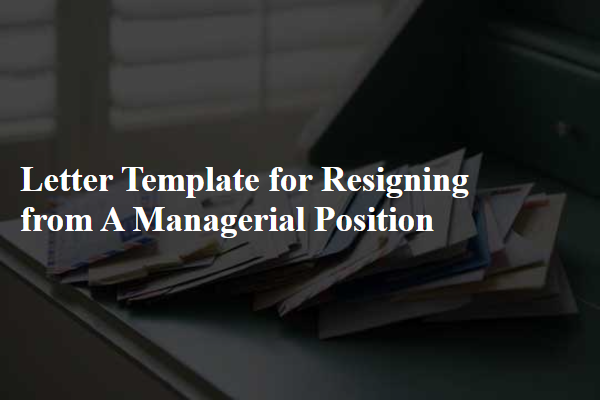

Comments